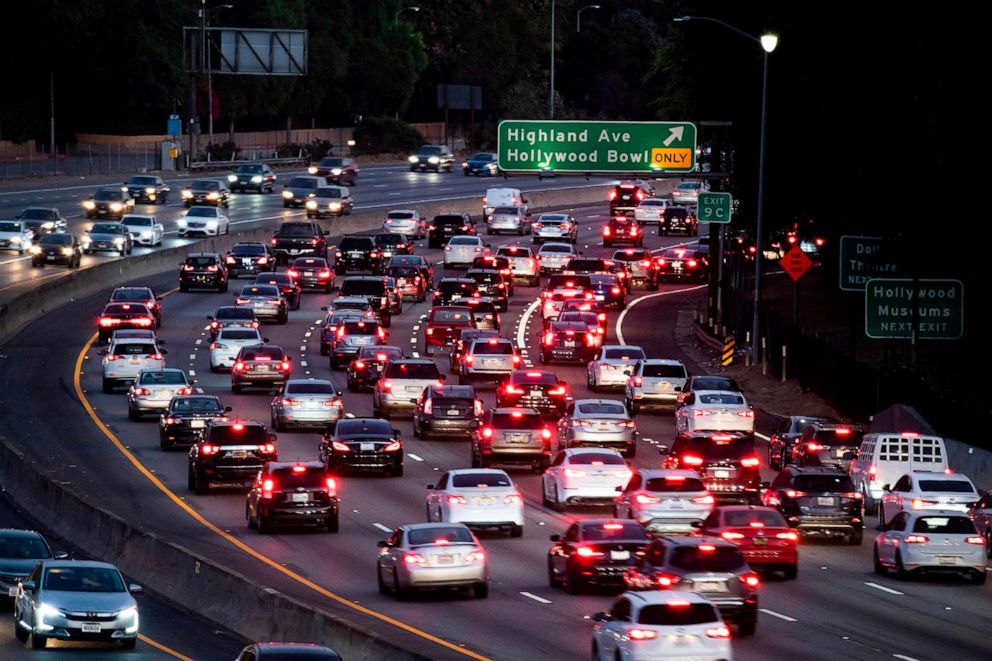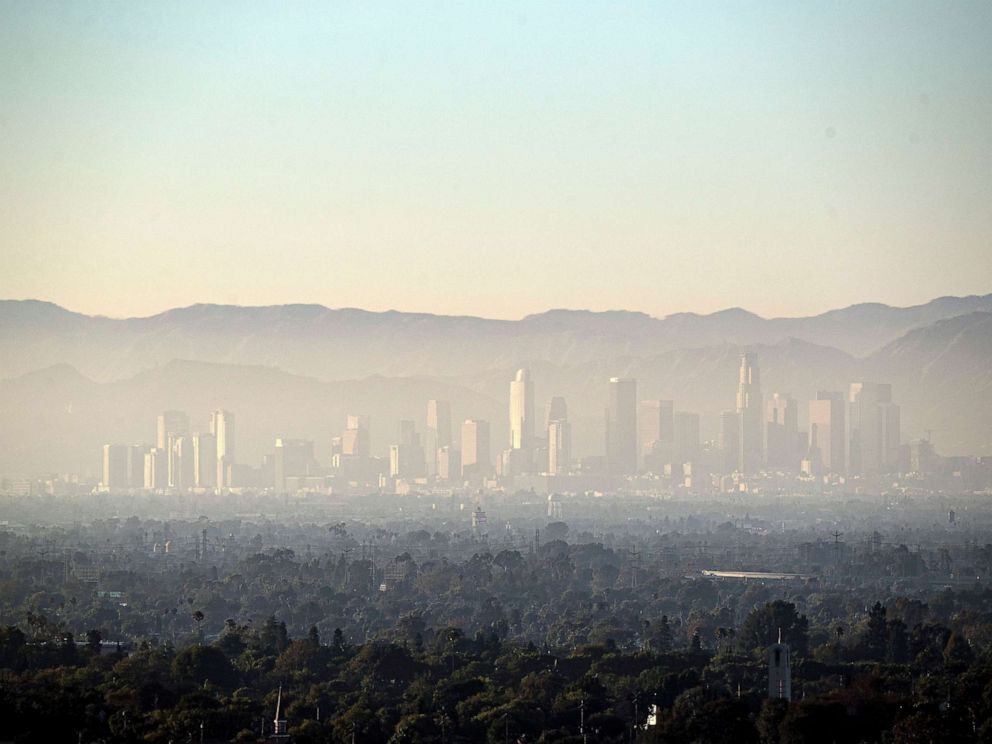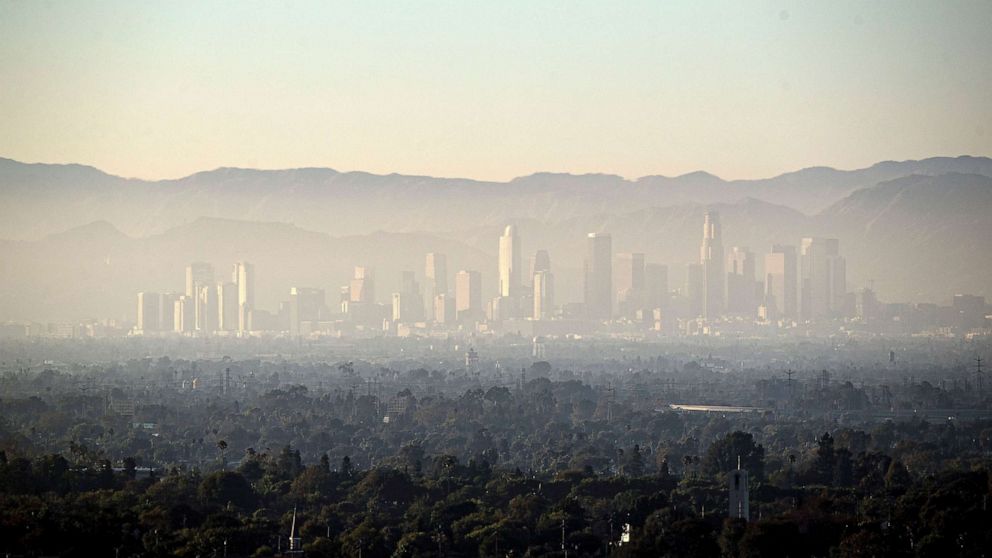[ad_1]
The Trump administration is threatening to block California from receiving federal highway grants if it doesn’t revise plans to address air pollution, saying the state has more cities that don’t meet pollution limits than any other in the country.
Interested in Donald Trump?
Add Donald Trump as an interest to stay up to date on the latest Donald Trump news, video, and analysis from ABC News.
The move is the latest escalation between the administration and the liberal state less than a week after the announcement last week that the agency will revoke California’s waiver to set its own standards to limit greenhouse gas emissions from vehicles, setting up a legal battle with the state.
California officials pushed back against the move, saying if the administration was serious about pollution it wouldn’t attack the state’s authority to regulate emissions and pollution from cars.
“California has failed to carry out its most basic responsibilities under the Clean Air Act, and as a result, millions of Californians live in areas that do not meet our nation’s air quality standards,” Environmental Protection Agency chief Andrew Wheeler said in a statement.
Wheeler sent a letter to California’s top air official on Tuesday saying the state’s plans to improve air quality were insufficient and they could lose federal funds if they don’t withdraw the old plans and submit new ones that correct the problems.
“California has the worst air quality in the United States, with 82 nonattainment areas and 34 million people living in areas that do not meet National Ambient Air Quality Standards — more than twice as many people as any other state in the country,” Wheeler said in the letter.
“As evidenced by the EPA’s recent work on interstate air pollution issues as well as analysis accompanying its rulemakings, California’s chronic air quality problems are not the result of cross-state air pollution or this Administration’s regulatory reform efforts,” he continued.
A top official from California’s air agency said EPA’s letter was inaccurate and misstated the situation, saying EPA has “unclean hands” and is “pounding the table about paperwork issues of its own creation” after having the documents for years.
 Win Mcnamee/Getty Images
Win Mcnamee/Getty Images
“We will continue to do work with EPA on its backlog, but EPA also needs to do its job and protect air quality. California and other states had to go to court, repeatedly, to get the EPA to implement the strict smog standards it claims to be worried about,” Richard Corey, executive officer of the California Air Resources Board, said in a statement.
“California has met federal standards in the past and we are working hard to meet the current ones,” the statement continued. “But we cannot get there until the federal government addresses emissions of federally regulated mobile sources, including heavy-duty trucks, locomotives, planes and ships. This letter appeared only days after EPA attacked our state authority on cars, increasing air pollution while at the same time limiting our ability to reduce it. If the Trump administration is serious about air pollution it will reconsider revoking our waiver, and while they’re at it, why not also fund the EPA to review submitted documents in less than a decade.”
Some of the documents at issue are California’s plans to address air pollution submitted in the late 1990s and early 2000s. In an interview with McClatchy, which first reported the letter, Wheeler said staffers told him the agency hadn’t acted on the documents because ‘we didn’t want to deny them and they couldn’t approve them’ because they were missing information.
California has long had problems with air pollution, in part because of the high number of vehicles that can contribute to air pollution from vehicles like ozone, carbon monoxide and particulate matter that contribute to smog. California agencies have reported that pollution has decreased significantly since 1970, but many cities are still listed as failing to meet limits on those pollutants, according to EPA.
 Robyn Beck/AFP/Getty Images
Robyn Beck/AFP/Getty Images
Under the Clean Air Act, the EPA has the authority to withhold federal funds from federal highway grants if the administrator determines a state has not submitted a plan to address areas that haven’t met standards to reduce air pollution.
The law says that if a state hasn’t submitted a new plan or corrected existing ones within 18 months after the finding, the administrator can block the state from receiving federal money for transportation projects, including those aiming to reduce pollution from vehicles.
EPA says California should withdraw 130 old plans to address air pollution in various parts of the state and submit new ones they say meet the requirements. After that, it could trigger an 18-month clock for the state to lose federal grant money or the administration to impose its own plan to deal with air pollution in the state.
California was approved to receive more than $19 billion in federal highway grants between 2016 and 2020, according to the Federal Highway Administration, but the administration cannot withhold money from grants to improve safety problems or prevent accidents under the Clean Air Act.
The move comes less than a week after the administration announced it will revoke California’s waiver to set its own standards on greenhouse gas emissions from cars, though an EPA senior official said Tuesday’s announcement wasn’t related to last week’s announcement on California’s clean cars waiver and that the administration chose to call out the state because it has the most areas that aren’t in compliance with air quality standards and that some areas have not met the standards for decades.
A spokesman for the California Air Resources Board did not immediately respond to a request for comment Tuesday morning.
Former EPA officials call the move political, saying California has one of the most protective air programs in the country and that the agency typically works with states instead of “throwing a temper tantrum.”
 Etienne Laurent/EPA-EFE/REX via Shutterstock
Etienne Laurent/EPA-EFE/REX via Shutterstock
“One in three people in the US breathes unclean air. Trump should ask EPA to do more to clean the air instead of rolling back the clean car program and revoking California’s authority to set its own clean car program. In my 18 years at EPA we never took a similar action against a state,” Margo Oge, former director of EPA’s office of transportation and air, said in a statement.
Last week, the president slammed the state’s handling of homelessness and the administration refused to provide more federal help to address the problem.
Trump also said the EPA would cite the city of San Francisco for environmental violations related to homeless encampments during his trip to California last week. EPA officials declined to comment on any pending enforcement action but an EPA senior official said Tuesday’s announcement was not related to Trump’s comments.
[ad_2]
Source link

